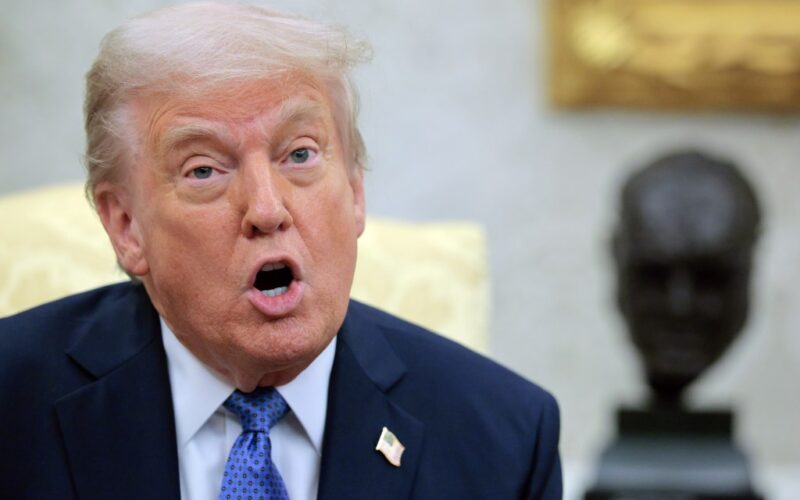The White House Tuesday slammed Amazon as “hostile and political” after the online retail giant reportedly decided to display the additional cost of President Trump’s tariffs in product listings.
Flanked by Treasury Secretary Scott Bessent, press secretary Karoline Leavitt told reporters her boss was livid at reports that Amazon plans to show consumers how much Trump’s tax on imported goods is raising the prices they pay.
“This is a hostile and political act by Amazon,” Leavitt told reporters. “Why didn’t Amazon do this when the Biden administration hiked inflation to the highest level in 40 years?”
She added that the cost of tariffs, which Trump has pegged at 145% on imports from China, should encourage consumers to buy products made in the U.S., which theoretically should not increase in price.
“This is another reason why Americans should buy American,” Leavitt said.
The White House spokesperson also slammed Amazon founder and top shareholder Jeff Bezos for the move. Once a nemesis of Trump, Bezos has sought to curry favor with the new administration and donated big bucks to his inauguration committee along with other Big Tech moguls.
Amazon did not immediately comment on the report. Its stock dropped by about 1.5% at the opening bell on Wall Street.
The report in Punchbowl News said Amazon would list the tariff cost right next to the original price of the product.
Retailers want to be transparent with consumers about price increases that are sure to hit them hard as Trump’s tariffs filter through the economy in coming weeks.
Tariffs are taxes that companies pay when they import products into the U.S., and are mostly passed on to consumers like any other taxes. But Trump falsely insists that foreign governments or companies will foot the bills.
The White House likely objects to the Amazon plan because it could focus consumers’ growing anger at the price hikes spawned by his unpredictable tariff plan.
Polls already show widespread dissatisfaction with Trump’s handling of the economy, and tariffs in particular, as Tuesday marks the 100th day of his second term.
Trump hit China with a blanket 10% tariffs, then quickly hiked them to 145% in a angry rtit-for-tat exchange with Beijing.
He says the tax on Chinese products will eventually be reduced, but in the meantime prices of many products are poised to skyrocket. There may also be shortages if importers delay taking delivery of products in hopes tariffs will eventually be eased.

China-founded e-commerce giants Temu and Shein raised prices for U.S. customers, a ripple effect from Trump’s sky-high tariffs.
Since launching in the United States, Shein and Temu have given Western retailers a run for their money by offering products at ultra-low prices, coupled with avalanches of digital or influencer advertising.
The White House did deliver some good news on tariffs to domestic automakers and car buyers.
It now says it will delay or permanently ease the taxes on imported auto parts, many of which are made in Mexico or Canada after automakers integrated their supply chains within North America.
The parts had been expected to incur a 25% tariff, which would have boosted the prices of many cars assembled in American factories.
Domestic automakers hailed the move with General Motors CEL Mary Barra saying it would “allow us to invest even more in the U.S. economy.”








